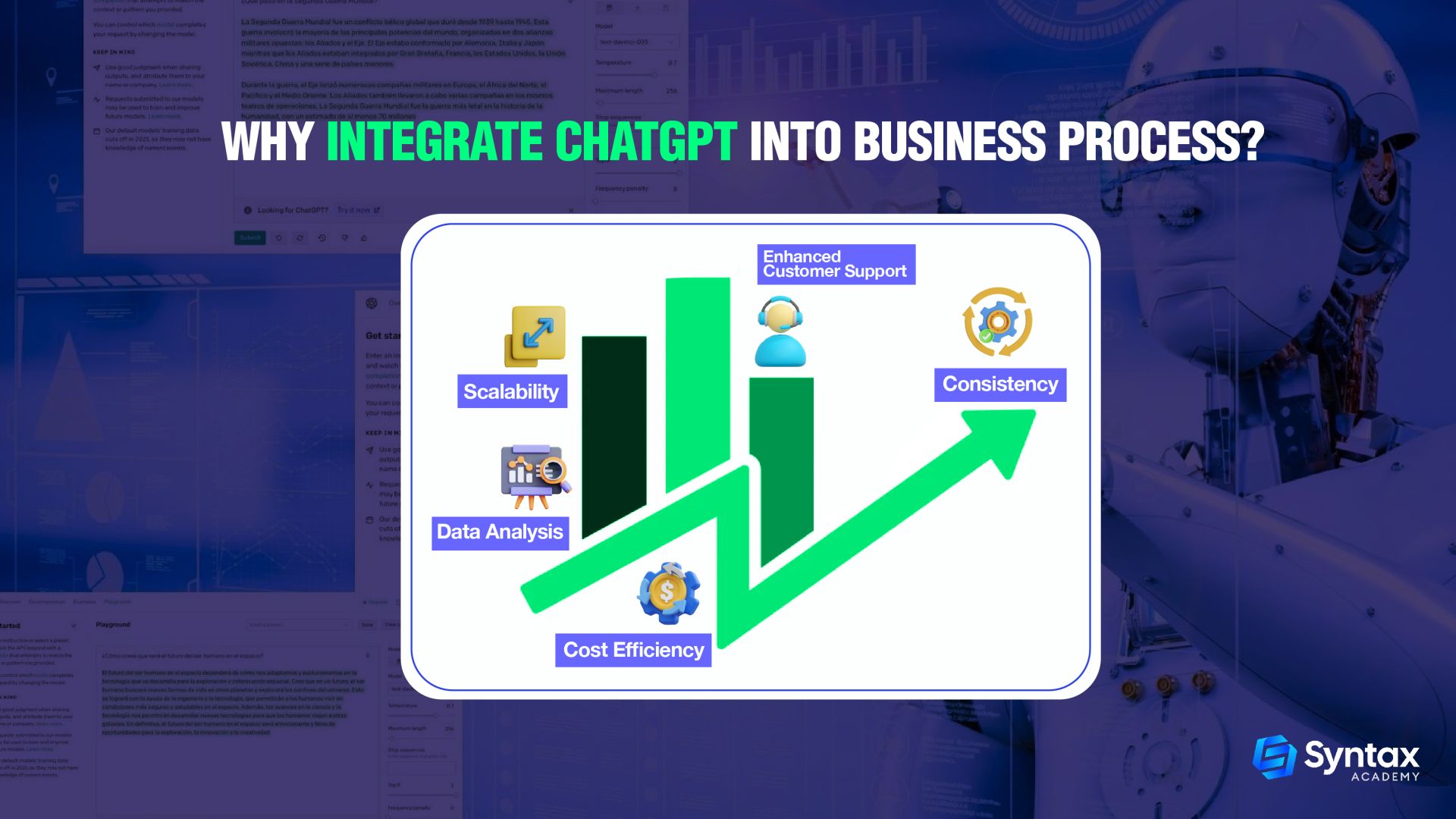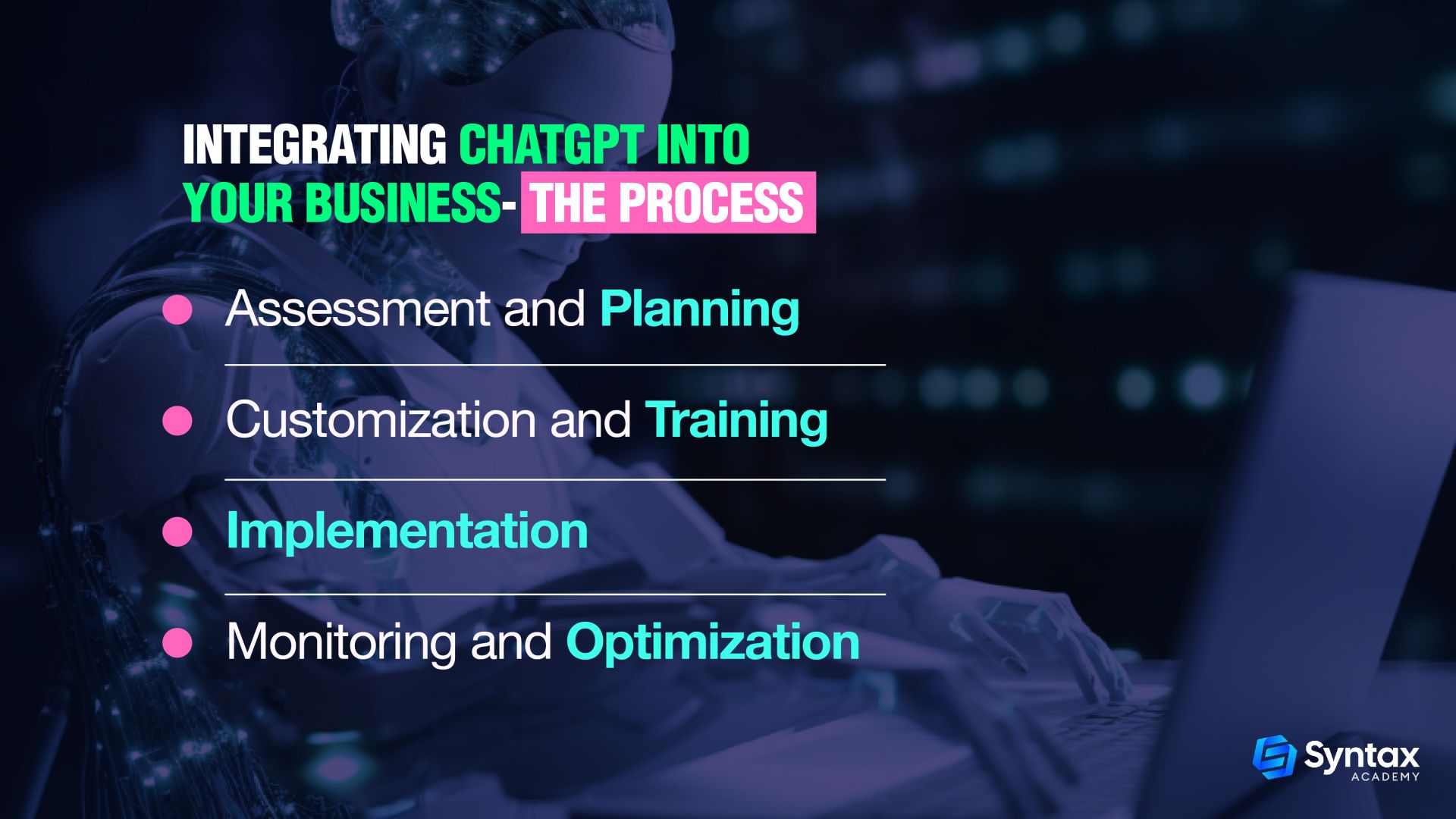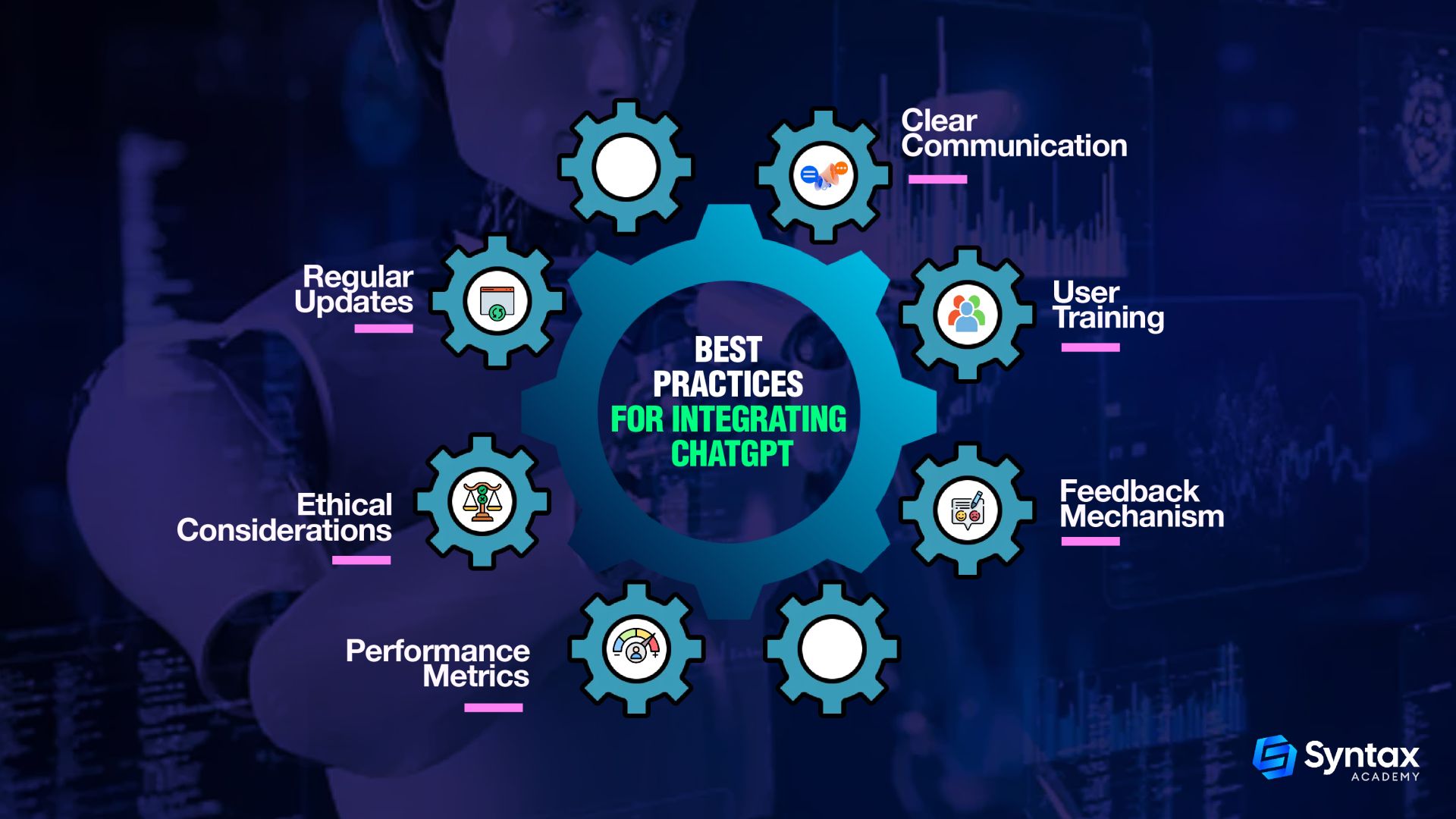Integrating ChatGPT into Business Operations: Best Practices

Running a business can be a balancing act, especially when it comes to keeping operations efficient while still providing top-notch service. Enter ChatGPT—a tool that can change the game. By integrating this AI assistant into your business, you can boost customer support, automate repetitive tasks, and analyze data like never before. This blog will guide you through how ChatGPT can enhance your operations, from the preparatory work to the actual integration, and share best practices to make the transition seamless and impactful.
Table of Contents
-
1. Why Should ChatGPT Be Integrated into the Business Process?
-
2. Getting Ready: What to Do Before You Plug ChatGPT In
-
3. How to Integrate ChatGPT into Your Business
-
4. Where Can ChatGPT Work Its Magic in Your Business?
-
5. Best Practices for a Smooth Integration
-
6. Conclusion
1. Why Should ChatGPT Be Integrated into the Business Process?
- Better Customer Support: You know how frustrating it is waiting for a reply? ChatGPT can answer customer queries instantly. No more waiting, which means happier customers.
- Saving Money: Automating repetitive tasks means you don’t need extra hands to do things ChatGPT can handle. This way, your team can focus on stuff that really needs their attention.
- Handling More Work Effortlessly: Whether it’s peak season or just a busy day, ChatGPT can juggle multiple conversations at once.
- Data Insights: Imagine having a tool that not only talks to customers but also picks up on trends and helps you improve the way you work.
- Consistency is Key: Unlike human agents, ChatGPT doesn’t have bad days. It provides reliable and consistent answers every single time.

2. Getting Ready: What to Do Before You Plug ChatGPT In
- Figure Out Your Goals: What do you want to achieve with ChatGPT? Whether it’s making customer service better or improving internal communications, get clear on your purpose.
- Collect the Right Data: ChatGPT needs good, clean data to function well. So gather everything it might need to answer customer queries accurately.
- Train ChatGPT: You’ll need to feed it specific info about your business—like what words and phrases your customers use. This helps it sound more “you.”
- Set Up Security: Make sure you’re protecting sensitive data. Set rules on what ChatGPT can and cannot handle.
- Check Your Tech: Is your system ready for the upgrade? You’ll want to make sure your IT setup can handle the extra load ChatGPT brings.
3. How to Integrate ChatGPT into Your Business

- Assess and Plan: Take a close look at your existing processes and see where ChatGPT can make a real difference. Whether it's customer support, sales, or HR, have a clear plan for how it will be used.
- Customize and Train: ChatGPT isn't one-size-fits-all, so tweak it to fit your business needs. Feed it your data and run some pilot tests.
- Start Small with Implementation: Don’t throw ChatGPT into everything all at once. Start with one area, say customer support, and roll it out gradually.
- Monitor and Optimize: Once ChatGPT is in action, keep a close eye on how it’s performing. Is it handling customer queries well? Are there areas for improvement? Be ready to tweak it as you go along.
4. Where Can ChatGPT Work Its Magic in Your Business?
- Customer Service: Think of ChatGPT as your 24/7 customer support agent—answering questions, resolving complaints, or providing info about your products.
- Sales and Marketing: It can engage with potential customers, answer their product queries, and even suggest personalized recommendations.
- Human Resources: From managing recruitment processes to answering employee FAQs, ChatGPT can take care of a lot of the repetitive tasks.IT Support: Need help with troubleshooting? ChatGPT can guide users through common tech issues.
- Finance: Handling routine inquiries about accounts, transactions, or even tracking expenses becomes easier with ChatGPT.
5. Best Practices for a Smooth Integration
- Keep Communication Clear: Make sure both your team and your customers know how ChatGPT is being used.
- Train Your Team: People will need to learn how to work alongside ChatGPT and make the most of its capabilities.
- Keep It Updated: Regularly feed ChatGPT new data to keep it sharp and in tune with what’s happening in your business.
- Listen to Feedback: Gather input from both employees and customers. ChatGPT will need tweaks from time to time, based on real-world usage.
- Stay Ethical: Ensure that ChatGPT respects privacy and follows the highest ethical standards, especially when dealing with sensitive information.
- Track Performance: Set clear performance goals so you can measure how well ChatGPT is doing and spot areas where it could do even better.

6. Conclusion
By now, you can see how integrating ChatGPT into your business can make a real difference. Whether it’s saving time, improving customer satisfaction, or helping your team focus on the bigger picture, ChatGPT has a role to play. With proper planning, smart execution, and a bit of fine-tuning along the way, you can harness its power to make your operations run smoother than ever.
And if you’re serious about mastering ChatGPT, consider taking a course at Syntax Academy. It’s designed to equip you with the know-how to make ChatGPT work for you—whether you’re leading a team or running your own business.
Share with your community!
Related Article

AI & ML
How Machine Learning is Transforming Business Decision-Making
By: Martha James
Ever wonder how companies like Netflix know what you want to watch next or how Amazon predicts what you’ll buy? That’s the power of Machine Learning (ML) in action, quietly transforming how businesses make decisions behind the scenes. In today’s hyper-competitive world, companies aren’t just relying on gut feelings anymore—they’re using data-driven insights to make smarter, faster decisions. And Machine Learning is leading the charge. In this blog, we’ll explore how ML is revolutionizing business decision-making, from improving accuracy and predicting trends to cutting costs and enhancing customer experiences.
Read More

Digital Marketing
9 Digital Marketing Trends That Will Dominate in 2024
By: Martha James
Ready to see where the future of marketing is headed? 2024 is bringing a wave of digital trends that are set to shake things up, and you don’t want to miss out.In this blog, we'll dive into the top digital marketing trends that are making waves this year—from AI advancements and hyper-personalization to the rise of NFTs and video content. Get ready to discover the strategies that will help you stay ahead of the curve.
Read More

AI & ML
The Role of AI in Driving Technological Innovation
By: Martha James
What if the future wasn’t just coming—but was already here, quietly transforming everything around you? That’s the power of AI.Artificial Intelligence is no longer just a buzzword. It's rapidly becoming the backbone of the technology we use daily—making life easier, businesses smarter, and industries more innovative. From voice assistants that understand your every command to smart algorithms that analyze massive amounts of data in seconds, AI is transforming the way we live and work.In this blog, we’ll explore what AI is, how it’s driving technological innovation across various industries, and the benefits and challenges that come with it.
Read More
Professionals from Industry Pioneers Choose
Syntax Academy for Skill Mastery
